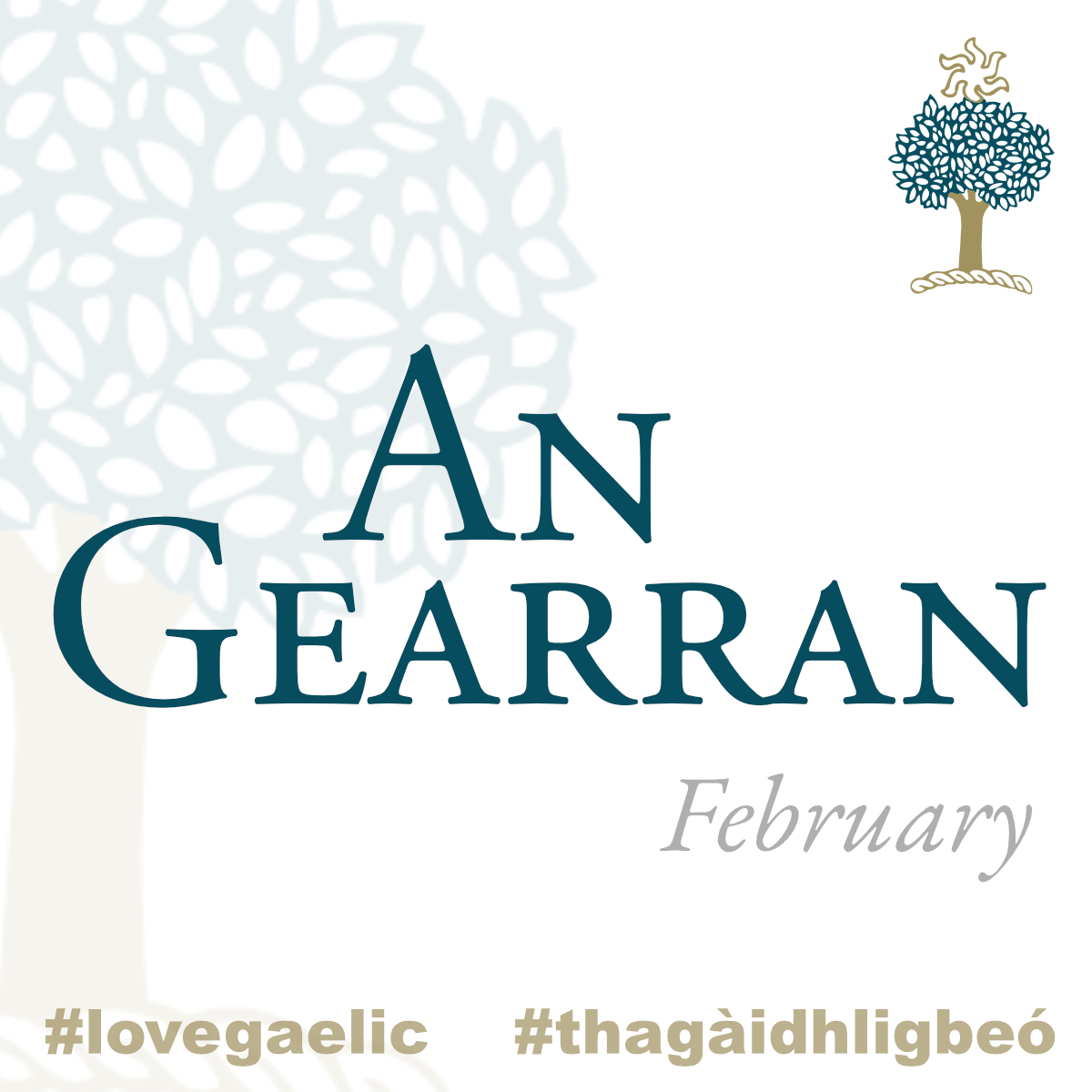
In Scottish Gaelic, ‘An Gearran’ (pronounced ‘an gyaran’) is how we say February.
We’re now half way into the month of February as we know it, but in Scottish Gaelic, February as a month is a relatively new concept! Traditionally, the Gaels worked in seasons and the natural cycle of the year. It was only in the 19th century that ‘An Gearran’ was adopted as a term to mean the month of February.
As mentioned in a previous newsletter, the 1st of February was marked in the Celtic calendar as ‘Imbolc’ and was the halfway point between the winter solstice and Spring equinox. This was an important event in the year; a time to celebrate new beginnings and hopefully the onset of Spring. With the arrival of Christianity, many of these ancient festivals were remolded as Christian celebrations and in the Gaelic culture of Ireland and Scotland, this became St Brigid’s day.
‘An Gearran’ however was a period of time that existed after this celebration of Imbolc and it’s length and exact time of occurrence varied in different parts of the Highlands and Islands, which is why the origins in the name of this month in particular, is a difficult one to define. For example, one saying we have in Gaelic suggests that ‘An Gearran’ was only a short period of time that occurred after January, ‘Mìos Faoilich, naoi latha Gearrain’ which suggests a month of January, followed by 9 days of ‘An Gearran’. Other academics of the 19th century suggested that ‘An Gearran’ was generally recognised as the period between what would be the equivalent today from the 15th of March to the 11th of April. Others still that the period was the last 2 weeks or even just the last week of February.
‘Geàrr’ in Scottish Gaelic can mean ‘cut’ or ‘short’ and it is in this word and the interpretation of it where confusion can exist over the exact meaning of the month. ‘Gearran’ in Irish and Scottish Gaelic is a word that is also used to mean a young bull or young male horse that has been castrated and it was usually at this time of year that male animals were castrated in order to give them time to heal before the warm weather arrived and the flies returned. Some say therefore that it is the time of the ‘geldings’ and this period known as the ‘cutting month’. Others say it is related to the unusual wind of this time of year, sometimes known in English as ‘the horse wind’, again connected to the time of the geldings. What is interesting though is that in Ireland, where this agricultural custom also took place, this was not used to define the month of February. Instead, the Irish took the Latin origin of the word, ‘Februarius’ meaning ‘of purification’ and adopted it into Irish Gaelic as ‘Feabhra’. So this may suggest that this time of cutting was not the original meaning of ‘An Gearran’ for this time of year that we have in Scotland either.
It may be in fact a term that is connected to weather lore which again the Gaels were well acquainted with and aware of times of the year when they could expect severe storms or perhaps good weather and this dominated what they did at certain times. It is suggested therefore that ‘An Gearran’ comes from the term ‘an gearr-shian’ meaning the short period of stormy and wintry weather, which of course we have been experiencing plenty of here on Skye this month!
The general consensus today is that ‘An Gearran’ most likely means the ‘short one’ and adopted to refer to the ‘short month’. Of course this makes sense to us now in the modern calendar that we follow and our shortest month February, which of course this year is one day longer!

